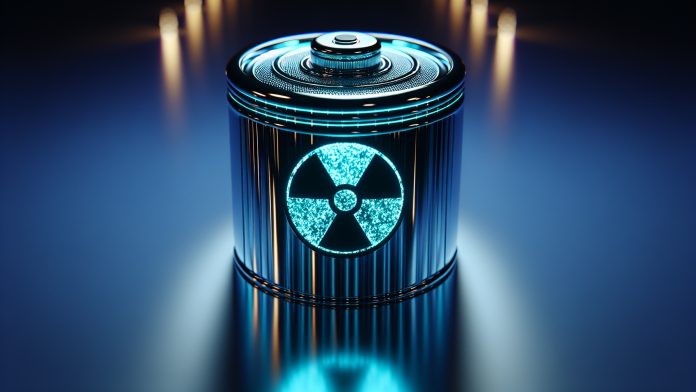A Potential Breakthrough in Sustainable Energy Technology
A groundbreaking innovation in energy technology has emerged from Ohio State University, where researchers have developed a nuclear battery capable of transforming radioactive waste into electricity. This revolutionary device harnesses ambient gamma radiation emitted by nuclear waste and converts it into usable energy, offering a novel approach to managing atomic byproducts while generating power.
If successfully scaled, this technology could provide an alternative energy source for specialized environments like deep-sea exploration, space missions, and nuclear waste storage facilities.
The Nuclear Waste Dilemma and the Promise of Conversion

Nuclear power currently accounts for approximately 20% of electricity generation in the United States, producing minimal greenhouse gas emissions. However, the industry faces a significant challenge: the safe disposal of radioactive waste. Traditional methods of storage and containment pose environmental and health risks, necessitating innovative solutions.
The newly developed nuclear battery presents a potential game-changer by converting hazardous atomic waste into a sustainable energy source, addressing waste management and energy production in one breakthrough.
How the Nuclear Battery Works
Developed by a team led by Lei R. (Raymond) Cao and Ibrahim Oksuz of Ohio State University, along with Sabin Neupane and Yanfa Yan of the University of Toledo, the nuclear battery operates using a combination of scintillator crystals and solar cells.
- Radiation Absorption: The scintillator crystals absorb gamma radiation from external nuclear waste sources.
- Light Emission: The crystals convert the absorbed radiation into visible light.
- Electricity Generation: Solar cells capture the emitted light and transform it into electrical energy.
The result is a novel energy-harvesting mechanism that eliminates the need for the battery to contain radioactive materials, making it safe to handle.
Performance and Testing: Powering the Future with Waste
The prototype nuclear battery, measuring just four cubic centimeters, was tested using two common radioactive isotopes found in spent nuclear fuel: cesium-137 (Cs-137) and cobalt-60 (Co-60).
- When exposed to Cs-137, the battery generated 288 nanowatts of power.
- When tested with Co-60, a more substantial radiation source, the power output increased to 1.5 microwatts—enough to power a tiny sensor.
While these power levels are trim compared to traditional batteries, researchers believe that scaling up the technology could achieve watt-level outputs, opening doors for broader applications.
Potential Applications and Safety Considerations
While still developing, the nuclear battery concept could revolutionize power solutions in environments where conventional batteries are impractical. Potential applications include:
- Nuclear Waste Storage Sites: The battery could provide localized power in already present radioactive waste facilities.
- Deep-Sea Exploration: Submersibles and underwater sensors could benefit from a long-lasting power source.
- Space Missions: Future spacecraft and satellites could utilize nuclear batteries for extended operations without needing solar power.
A crucial safety feature of the battery is its lack of direct radioactive material incorporation—it simply harvests existing radiation from external sources. This reduces the need for heavy shielding and minimizes safety concerns using otherwise hazardous nuclear byproducts.
Challenges and Future Prospects
The efficiency of the nuclear battery depends on several factors, including the size, shape, and type of scintillator crystals used. Larger crystals can absorb more radiation and convert it into more incredible energy while optimizing the surface area of solar cells, which could further enhance power generation.
While promising, the technology faces hurdles in scalability and cost-effectiveness. Researchers are now focused on improving power output, increasing energy conversion efficiency, and ensuring the long-term durability of the device in high-radiation environments.
If successfully developed at scale, nuclear batteries could offer a sustainable, long-term power solution for critical applications while reducing environmental risks associated with nuclear waste.
A Step Toward the Future of Energy

As highlighted in the researchers’ recent study, titled “Scintillator-Based Nuclear Photovoltaic Batteries for Power Generation at Microwatts Level,” published in Optical Materials: X, this innovation marks a significant step toward redefining how we manage nuclear waste and harness its potential for energy production.
Cao, director of the OSU Nuclear Engineering Laboratory, expressed optimism about the technology’s future:
“The nuclear battery concept is up-and-coming. There’s still lots of room for improvement, but in the future, this approach will carve an essential space for itself in both the energy production and sensors industry.
With further research and development, nuclear batteries could emerge as a crucial sustainable energy solution. They would provide clean, efficient power while mitigating the challenges of nuclear waste storage.


